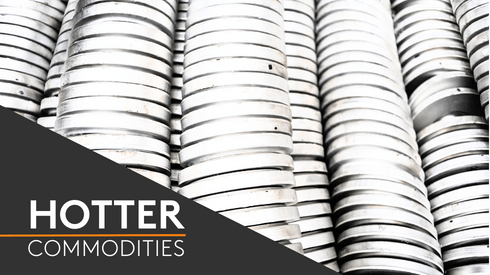“There is a difference between a commercial value and a strategic value when including gallium and germanium among critical raw materials,” Olimpia Pilch, founder and chief operating officer of CMIA, said in an exclusive interview with Fastmarkets on September 6.
The problem created by this gap between commercial value and strategic value has arisen because Western companies have not been able to make the production and security of these materials economically viable for them. This has led to Chinese companies being able to monopolize the supply of these critical materials.
China imposed export controls on gallium and germanium with effect from August 1. This has increased the level of criticality for these metals, especially gallium, because 98% of gallium production is in China.
It has also increased the risk for the costs of gallium and germanium, which can be used in semiconductor chips including those in electric vehicles (EVs), because the prices for these metals can shoot up due to difficulties in exporting the materials out of China.
Fastmarkets’ twice-weekly price assessment for gallium, 99.99% Ga min, in-whs Rotterdam, was $265-301 per kg on July 5, the first assessment after China’s Ministry of Commerce announced the export controls on gallium and germanium. That was up from the preceding assessment at $250-265 per kg on June 30. The most recent assessment, on September 13, was $400-450 per kg.
Similarly, Fastmarkets’ twice-weekly price assessment for germanium, 99.999% Ge, in-whs Rotterdam, was $1,350-1,400 per kg on July 5, up from $1,300-1,400 per kg on June 30. The latest assessment was $1,390-1,500 per kg on September 13.
New production?
Starting up new production outside China would take finance and time. In the case of gallium, recycling the kind of imperfect gallium chips that cannot be used in semiconductors is how the Western market has been able to make up the deficit.
“We have not had anyone who has announced a follow-up on this news and intended to produce more gallium or germanium,” Pilch said.
“It will come down to whether it is viable or feasible. What is the profit margin? Who is going to pay for it, if you had to pay a little extra to get it from China? Is the manufacturing company willing to cover that? Is the US government going to pay for that? We know that the UK government is not going to pay for that, and the EU is also very unlikely to do so,” she added.
Pilch told Fastmarkets that governments run into difficulty when choosing which critical raw materials to prioritize. Gallium and germanium are among other critical raw materials such as cobalt, lithium and nickel, which are all also required for EVs and as a part of the wider energy transition.
“We can’t see governments supporting the whole supply chain… The question remains: how do we provide the product that consumers can afford?” Pilch said. “Where Western markets can take the lead is in high-spec stuff, not in mass production. Volume gain is where China is good.”
Affordable EVs
The European Commission launched an anti-subsidy investigation into EVs from China on September 13, to look into whether to impose tariffs to protect the EU against Chinese EV imports that benefit from state subsidies.
“The global markets are now flooded with cheaper Chinese electric cars… This is distorting our market,” Ursula von der Leyen, President of the European Commission, said.
“This anti-subsidy tariff would have a big effect on the adoption [of electric vehicles] if they [penalize] the only truly affordable EVs in the market,” Phoebe O’Hara, Fastmarkets’ battery raw materials analyst, said.
There is a lack of affordability for EVs in certain areas in Europe, O’Hara noted.
The graph shows how the average EV price is almost half of the average annual salary in Central and Eastern Europe.
“Central and Eastern Europe are always left behind in the electrification conversation in Europe,” O’Hara said.
In order for vehicle sales in Central and Eastern Europe to reach 100% EV penetration by 2035, 2 million EV sales will be required between 2033 and 2035, according to Fastmarkets’ research.
So far, however, EV sales were only 39,000 vehicles in 2020, 72,000 vehicles in 2021 and 89,000 vehicles in 2023.
It is not only certain regions that will be excluded from the change to electrification, however, it is also the low-income families in all regions, who are likely to be left behind.
“Some low-income families will not be able to afford a brand new Tesla,” Pilch said. “And public transport is absolutely terrible in the UK.”
With the rising cost of living, the energy crisis and a lack of disposal income, coupled with the potential rising cost for EVs due to the difficulties of securing critical raw materials such as gallium and germanium, the hurdle to complete electrification remains in place.
“There is a lot of talking but very little action,” Pilch said.






